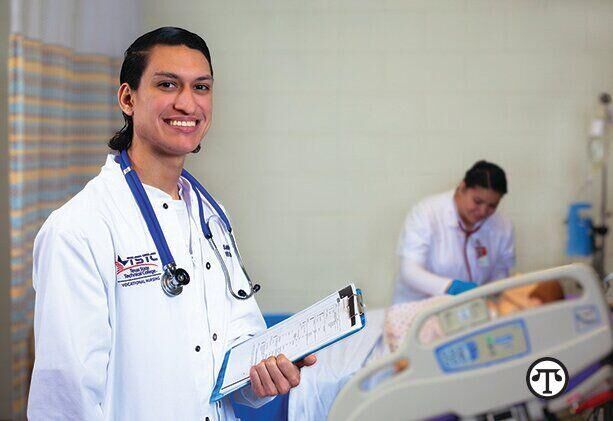(NAPSI)—As nursing students graduate and move into jobs at hospitals and other medical care facilities, they find an increasing shortage of needed personnel.
The Problem
In fact, the Texas Department of Health and Human Services’ Texas Center for Nursing Workforce Studies has projected that in 2032 there will be more than 79,000 licensed vocational nurses in Texas but a demand for more than 91,000. The state agency also projected that in 2032 there will be more than 291,000 registered nurses in the state but a need for more than 348,000.
What’s more, “the hospitals that pay less have the bigger need,” according to Patricia Palomo, director of nursing education at Valley Baptist Medical Center in Harlingen and a member of the Texas State Technical College (TSTC) Nursing program’s advisory board. “Staff go where the money is,” she explained.
Added Adrienne Reyes, director of TSTC’s Registered Nursing program, the Texas Board of Nursing requires all state nursing schools to have a 10-1 student-to-instructor ratio. As nursing programs request permission to enroll more students, Reyes said the board looks at pass and graduation rates and how many graduates are going into the workforce.
“The biggest part of the restriction is finding nursing educators,” Reyes said. “Our educators need to be master’s degree-prepared nurses.”
A Solution
That’s where TSTC can help. It offers a certificate of completion in Vocational Nursing and an Associate of Applied Science degree in Nursing. The associate degree program is for those who are already licensed vocational nurses to transition to becoming registered nurses.
“The advantage of a transition program like ours is the student that has the licensed vocational nursing license can be working in the workforce. They can be getting a salary, supporting their family and getting hands-on experience while they are going through the program,” Reyes said.
She said the Registered Nursing program has a 96% placement rate for graduates and the remaining 4% of graduates go on to pursue a bachelor’s degree in nursing.
Nurses Where They’re Needed
What’s more, most graduates stay close to home to work. She said the Texas Rio Grande Valley has a large need for nurses of all levels.
“They want to stay here,” she said. “This is where they were brought up, and they want to continue to serve the population they know so well.”
Financial Help
Reyes said Harlingen’s two hospitals, Harlingen Medical Center and Valley Baptist Medical Center, offer scholarships that help TSTC nursing students pay for their state board exams and license registration fees. She described this as an investment in the students in hopes that they will make the best decision as to where they want to go to work.
Starting Young
Leashia Ruelas, a nursing supervisor at Rolling Plains Memorial Hospital in Sweetwater and a member of the TSTC Nursing program’s advisory board, said getting people interested in the nursing field should begin as early as high school. “(I think it should go) back to candy stripers, but something that gets the younger person wanting to go to the hospital,” Ruelas said. “Look at the things high school students can do to have a career right out of high school.”
Reyes said students who go straight into a four-year registered nursing program tend to focus more on community nursing and leadership. “By transitioning to a registered nurse, they (licensed vocational nurses) are more valuable because they have more skills under their belt,” she said.
Learn More
For more information on TSTC, go to tstc.edu.
Note to Editors: While this information can be useful to anyone, anywhere, it is of particular importance to people in California, New York, Texas, Arkansas, Louisiana, Oklahoma and New Mexico.









